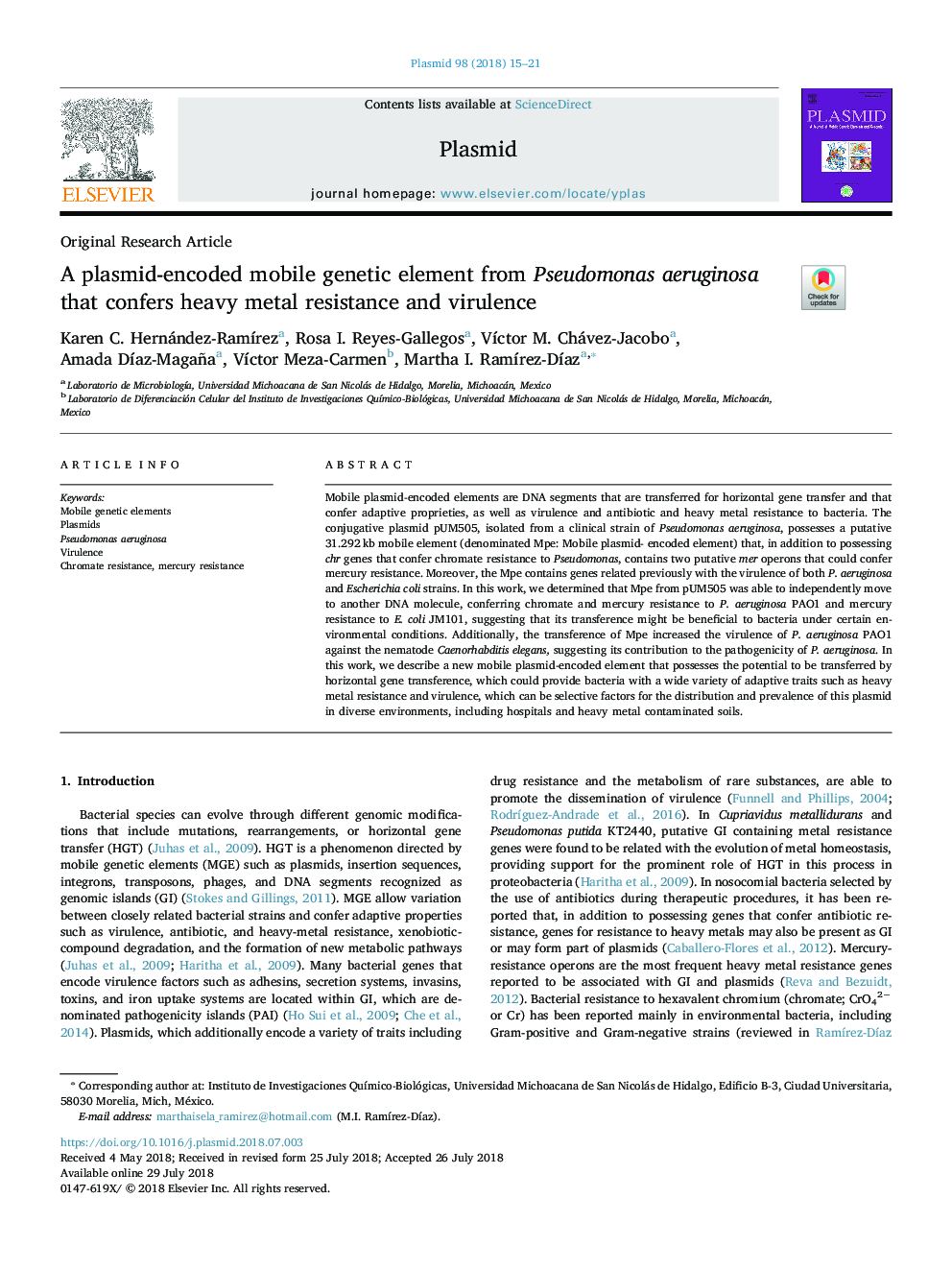| Article ID | Journal | Published Year | Pages | File Type |
|---|---|---|---|---|
| 8647773 | Plasmid | 2018 | 7 Pages |
Abstract
Mobile plasmid-encoded elements are DNA segments that are transferred for horizontal gene transfer and that confer adaptive proprieties, as well as virulence and antibiotic and heavy metal resistance to bacteria. The conjugative plasmid pUM505, isolated from a clinical strain of Pseudomonas aeruginosa, possesses a putative 31.292â¯kb mobile element (denominated Mpe: Mobile plasmid- encoded element) that, in addition to possessing chr genes that confer chromate resistance to Pseudomonas, contains two putative mer operons that could confer mercury resistance. Moreover, the Mpe contains genes related previously with the virulence of both P. aeruginosa and Escherichia coli strains. In this work, we determined that Mpe from pUM505 was able to independently move to another DNA molecule, conferring chromate and mercury resistance to P. aeruginosa PAO1 and mercury resistance to E. coli JM101, suggesting that its transference might be beneficial to bacteria under certain environmental conditions. Additionally, the transference of Mpe increased the virulence of P. aeruginosa PAO1 against the nematode Caenorhabditis elegans, suggesting its contribution to the pathogenicity of P. aeruginosa. In this work, we describe a new mobile plasmid-encoded element that possesses the potential to be transferred by horizontal gene transference, which could provide bacteria with a wide variety of adaptive traits such as heavy metal resistance and virulence, which can be selective factors for the distribution and prevalence of this plasmid in diverse environments, including hospitals and heavy metal contaminated soils.
Related Topics
Life Sciences
Biochemistry, Genetics and Molecular Biology
Genetics
Authors
Karen C. Hernández-RamÃrez, Rosa I. Reyes-Gallegos, VÃctor M. Chávez-Jacobo, Amada DÃaz-Magaña, VÃctor Meza-Carmen, Martha I. RamÃrez-DÃaz,
